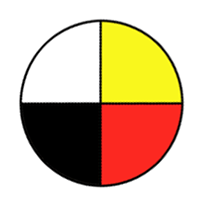Investigate the growth and development of plants, including the conditions necessary for germination.
CP, SI
| (a) |
Pose questions related to plant growth (e.g., How do very young plants look different from grown plants? How much water do plants need to grow? Do all plants grow in the same way?). |
| (b) |
Observe and explain the function of the major structures (i.e., root, stem, flower, leaf, and fruit or seed) of a variety of plants. |
| (c) |
Relate characteristics such as the number and shape of leaves, flower colour, height, and presence and type of fruit in different types of plants to the plant's environment. |
| (d) |
Sort and classify plants and/or seeds according to one or more student-selected attributes. |
| (e) |
Observe and represent, using written language, pictures, and charts, changes that occur through the life cycle of a flowering plant. |
| (f) |
Compare the basic needs of plants to the basic needs of animals and humans. |
| (g) |
Research ways in which plants rely on animals and abiotic factors (e.g., gravity, wind, and water) to support plant reproduction by dispersing seeds. |
| (h) |
Predict and investigate conditions such as the temperature, available sunlight, available nutrients in soil, and available water, which are necessary for plant germination and growth. |
| (i) |
Care for a flowering plant throughout its life cycle, tracking its growth and changes. |
| (j) |
Estimate, record, and display relevant measurements of plant growth, using rulers, tables, and bar graphs. |
| (k) |
Suggest explanations for patterns and discrepancies in the growth rate of similar plants grown in varying conditions. |
| (l) |
Explain the importance of water and light for plant growth and the mechanisms by which plants obtain water and light from the environment. |
| (m) |
Identify characteristics that remain constant and those that change throughout the life cycle of a flowering plant. |
| (n) |
Pose new questions about conditions necessary for plant growth, based on what was learned. |








A teacher's guide is available.



This book highlights the importance of looking ahead to and planning for what we leave our grandchildren and the generations to follow.





A teacher's guide is available.




















